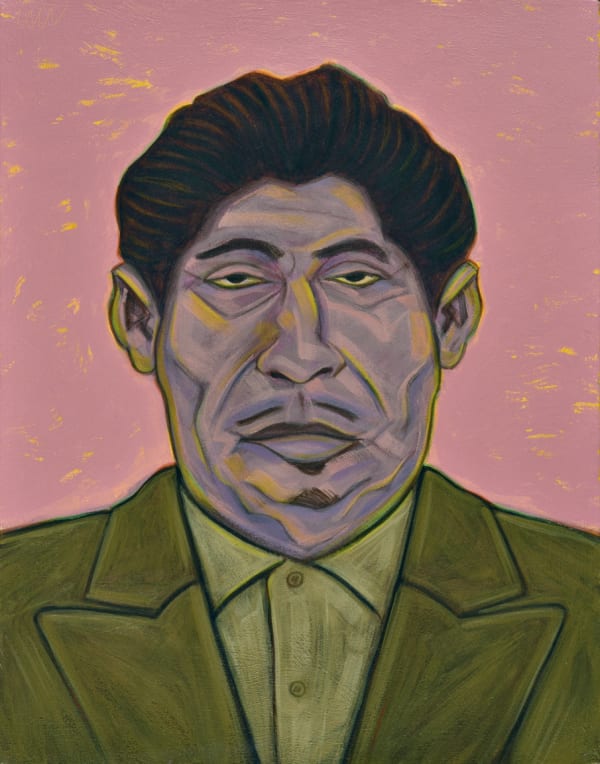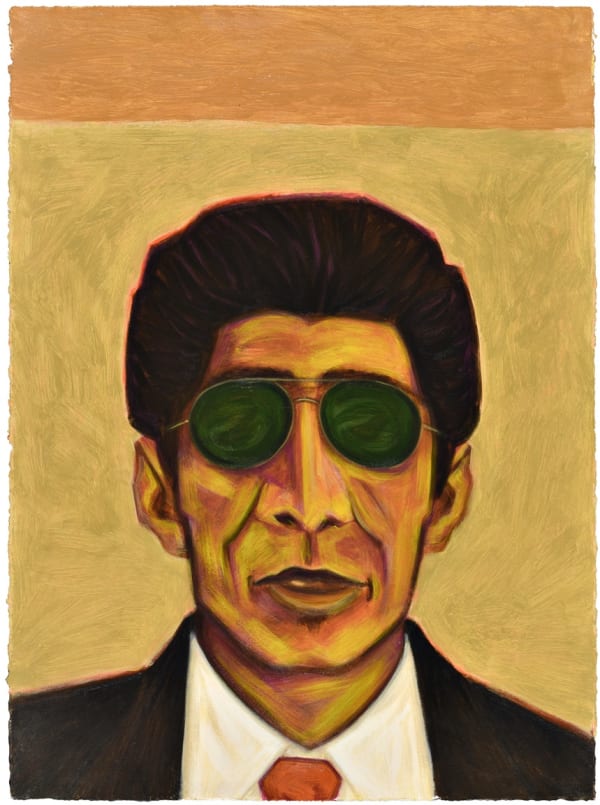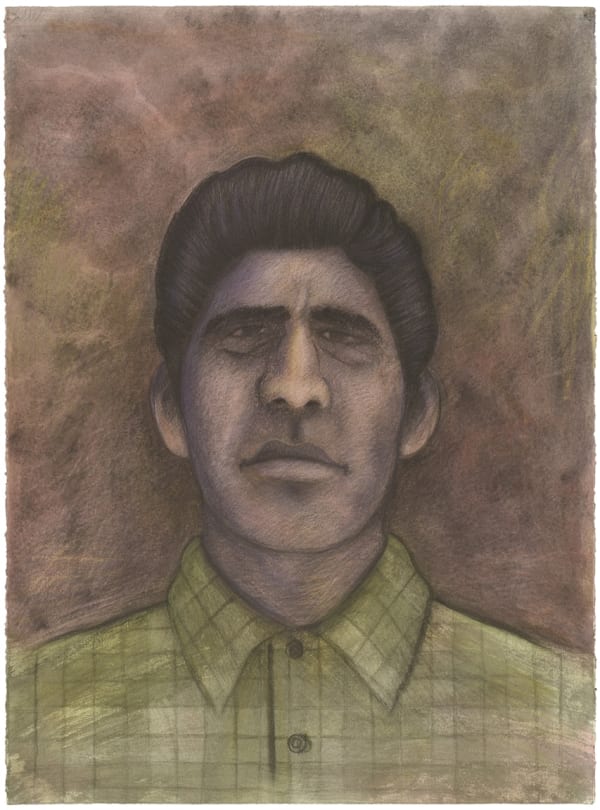-
César A. Martínez: Mi Gente
-
A major figure in the Chicano Art Movement of the late 1970s and 1980s, Martínez’s portraits are icons of Mexican American art history. Martínez was a teenager during the early 1960s in his hometown, Laredo,
Texas where Pachucos (zoot suiters), Batos (dudes), and Rucas (girls) were part of his everyday life.Martínez is drawn to the way in which Mexican American family photographs served as intimate, personal portraits, during a time when only white individuals or groups were being iconized in paintings. Martínez offsets his melancholic subjects against a vibrant palette of clothes in tension against abstract backgrounds. The individuals in Martínez’s works are merely hybrids derived and elaborated from many different photographs found in high school yearbooks, obituaries, newspapers, and other public sources.
-
 César A. MartínezBato Con Sunglasses, 2021Acrylic on Muslin28 x 22 in
César A. MartínezBato Con Sunglasses, 2021Acrylic on Muslin28 x 22 in
71.1 x 55.9 cm -
-
“The new paintings reflect the spirit of the drawings more and more and I couldn't be happier because evolution is a good thing, and that has been happening in different ways. The characters in the Bato/Pachuco series have, over the years, acquired more and more particularity, and much more so now with the new drawings.”
- César A. Martínez
-
-
"The touch that animates César A. Martínez's portrait paintings is precise and intimate. The figures he paints -often with their eyes hidden behind sunglasses- feel like particular individuals and imagined figures simultaneously. An early interest in Color Field paintings by artists like Mark Rothko, Jules Olitski, and Kenneth Noland inspired Martínez to try his hand at the form as early as the mid-1960's. By the time he moved to San Antonio in the late '60's, he had been introduced to prominent figures active in the Chicano movement in Texas, New Mexico, and California. It is then that he began creating portraits that synthesized his interests in monochrome painting and figurative portraiture."
- Dean Daderko, "A Feeling For...," Right Here Right Now: San Antonio, Contemporary Arts Museum Houston, 2018.
-
-
"Each portrait represents a characteristic personality. Some are humourous; others are more poignant portrayals. As a group, they provide a variety of street types that society at large may prefer to ignore. Yet, here they are in all their glory - the common man elevated to the level of high art."
- Carey Clements Rote, "César A. Martínez: A Dual Heritage," César A. Martínez: A Retrospective, The McNay Art Museum, 1999.
-
 César A. MartínezSerape: De Colores, 1980Signed front bottom right.
César A. MartínezSerape: De Colores, 1980Signed front bottom right.
Acrylic and graphite on paper22.25 x 30 in
56.51 x 76.2 cm
César A. Martínez: Mi Gente: New York City
Past viewing_room



























